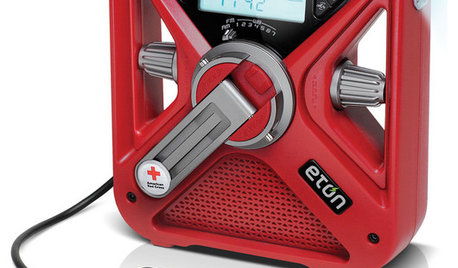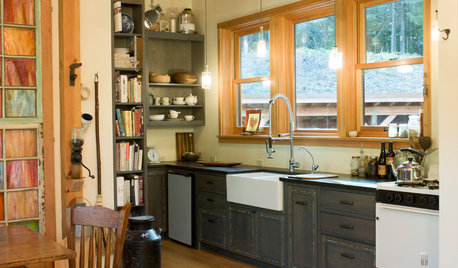Power Inverter For Sump Pump Question
itzbinnice
11 years ago
Related Stories

MOVINGHiring a Home Inspector? Ask These 10 Questions
How to make sure the pro who performs your home inspection is properly qualified and insured, so you can protect your big investment
Full Story
DOORS5 Questions to Ask Before Installing a Barn Door
Find out whether that barn door you love is the right solution for your space
Full Story
LIFEHow to Prepare for and Live With a Power Outage
When electricity loss puts food, water and heat in jeopardy, don't be in the dark about how to stay as safe and comfortable as possible
Full Story
GREEN BUILDINGOff the Grid: Ready to Pull the Plug on City Power?
What to consider if you want to stop relying on public utilities — or just have a more energy-efficient home
Full Story
HOME TECH7 Ways to Charge Up and Connect After Disaster
Products and tips for communicating and keeping essential items running till the power's back on
Full Story
HOUZZ TOURSHouzz Tour: Off the Grid in the Remote Washington Wilderness
Not only does this house run on solar power, but it was built with it too
Full Story
GREEN BUILDINGHouzz Tour: Going Completely Off the Grid in Nova Scotia
Powered by sunshine and built with salvaged materials, this Canadian home is an experiment for green building practices
Full Story
GREEN BUILDINGGoing Solar at Home: Solar Panel Basics
Save money on electricity and reduce your carbon footprint by installing photovoltaic panels. This guide will help you get started
Full Story
BASEMENTSDesign Workshop: Is It Time to Let Basements Become Extinct?
Costly and often unnecessary, basements may become obsolete — if they aren’t already. Here are responses to every reason to keep them around
Full Story
EARTH DAYGrow a Beautiful Garden With Ecofriendly Greywater
Reducing home water waste means lower bills and a healthier planet. Here's how to set up a greywater home irrigation system that can help
Full Story







Ron Natalie
itzbinniceOriginal Author
Related Professionals
Goodlettsville General Contractors · Los Lunas General Contractors · Nampa General Contractors · Norfolk General Contractors · Port Huron General Contractors · River Edge General Contractors · Rolling Hills Estates General Contractors · Troy General Contractors · Vincennes General Contractors · Waianae General Contractors · Springdale Handyman · Chino Hills Solar Energy Systems · Richfield Solar Energy Systems · Birmingham Home Automation & Home Media · Westminster Home Automation & Home Mediayosemitebill
itzbinniceOriginal Author
brickeyee
yosemitebill
itzbinniceOriginal Author
yosemitebill
itzbinniceOriginal Author
mike_kaiser_gw
itzbinniceOriginal Author
Ron Natalie
itzbinniceOriginal Author
daveho
brickeyee
daveho
brickeyee
itzbinniceOriginal Author
brickeyee
BrianInnes
brickeyee
ionized_gw
brickeyee
ionized_gw
brickeyee